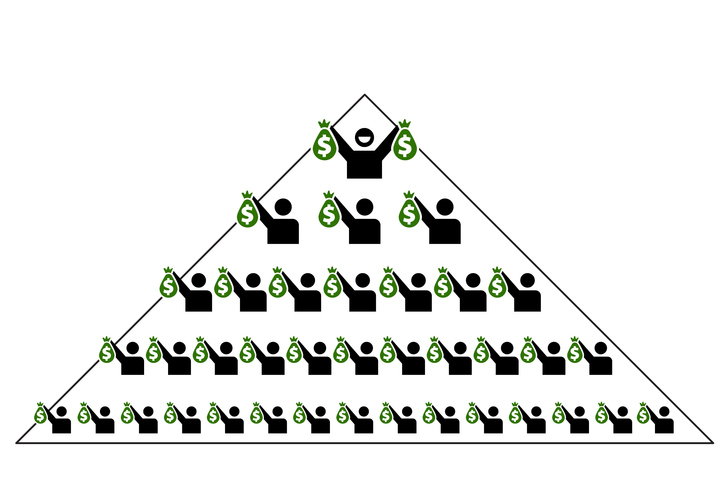As scholar-teachers, we know that the habit of reflection can be a powerful tool for workplace learning and performance, which can separate high-performance professionals from mediocre ones.
Notedly, when educators engage in reflection, it is usually in the form of John Dewey: “We do not learn from experience…we learn from reflecting on experience.” This type of reflection is called after-action or on-action. However, often overlooked is that there are other forms of reflection. Further, reflection-after-action may not have the highest return of effort; or be the main task that drives the 20% of the effort that could result in the 80% of desired outcomes, the so-called 80/20 rule of which has been integrated in higher education.
That is, according to Donald Schon, who has written several of the most remarkable texts on reflection in the past several decades, educational practitioners should sift their reflection through during-action (or in-action), rather than primarily relying on after the action.
In contrast to Dewey, Schon’s reflection-during-action explicitly aligns with the idea that there is intellectual rigor in professional practice, such as those of us who are scholar-teachers. Here, Schon demonstrates that intellectual rigor lies in our knowing-in-action, which is tacit and gained through doing and experimenting. However, we are often unaware of tacit knowledge that underlies our activities and actions, especially when things do not go as planned.
Therefore, Schon has designed reflection-during-action in which we learn to frame and reframe unexpected outcomes, “talking-back” and “back-talking” to ourselves while teaching simultaneously. In turn, our actions and reactions can adequately address those unexpected classroom issues in real time. By implication, if the focal reflection is towards after the action, the classroom can become a bottleneck that hinders learning flows and creates more bad teaching days.
For Schon, while reflection-during-action is the most difficult to do, it has the highest RoE™ among the different types. Yet, Schon does not dismiss the importance of setting and reflecting a direction before the action in order to have a strategic plan before entering the classroom. Additionally, when leaving the classroom, the reflection-during-the action becomes the primary material for reflection after the action.
How I Approach the Circular Model of Reflection
In general, Schon’s model of reflection is practicable, where unexpected class issues can be identified and sufficiently solved immediately; together with before the action and after the action, the problem-setting and problem-solving can be iterated until desired results come about. Not to be overlooked is when educators circulate their knowing-in-action with and for others, this signifies beyond-action, cultivating double-loop learning for all to benefit from.
In experimenting with Schon’s reflective practices, I see the importance of connecting and sequencing the four types of reflection, as this has been implemented in practitioner fields such as nursing education and medical education. In particular, I have utilized this model when I teach a new course for the first time, improving an existing course, and/or experimenting with new teaching practices.
During the Covid-19 pandemic, I set a before-action directive in my international business for students to engage in a virtual consulting-based learning. This was done with one of the biggest US medical suppliers, which had to resolve a supply-chain bottleneck of importing medical supplies to American hospitals. The before-action directive included the anticipation of a good deal of messiness and muddling through during classes.
In the above context, I saw my pandemic classroom as a laboratory to prototype and test new pedagogical moves, and where unexpected issues are expected to come to light. Thus, I paid attention and reflected during the action in order to construct adjustments, while doing hybrid-teaching at the same time. Through reflection-after-action I then take a step back and “replay” why, how, and what effects did adjustments have; whether how I could handle those adjustments better; and whether those adjustments change my way of knowing. I then crafted those takeaways into my reflection-before-action for the next class.
In context of the 80/20 rule and its variation, I estimated that my effort in reflection during-action for the above was about 20 percent; and in which about 50 percent of the messiness and unexpected surprises were adequately addressed. Whereas my effort in reflection after-action was about 10 percent and with results about 20 percent, while before-action was about 5 percent with 10 percent in terms of results.
I see the 80/20 rule has an on-going process in which the next time I teach the same course, my goal is to move towards achieving 90% of desired outcomes. As a matter of good practice, I wrote up a Faculty Focus article, sharing my experiences of reflective practice through beyond-action.
Why You Should Engage in the Circular Model of Reflection
By some accounts, Schon’s reflective practice has ushered and advanced that professional practitioners such as scholar-teachers exhibit a form of intelligence, a complex form of professional creativity. As scientists produce new knowledge in their labs, Schon believes that practitioners like scholar-teachers should generate their knowing-in-action – connecting knowledge generation, best practices, and administration policy.
“When someone reflects in action,” Don Schon states, “he becomes a researcher in the practice context” (Schön, 1983, p.68). For scholar-teachers, I interpret this to mean that we learn more about good teaching as we teach, and even more so when we deliberately integrate reflective practice to generate knowledge for ourselves and for our profession.
When we engage in the circular model of reflection – before-action, during-action, after-action, and beyond-action – we are explicitly creating new data. In turn, we can immediately utilize new information to further our faculty assessment reports, professional development, academic writings, and research publication.
If “we teach who we are,” the circular model of reflection can inform us for our espoused theory (i.e. we say what we do) and our theory in action (i.e. what we actually do). That is, when do make our reflective practice ‘modus operandi,’ we declare our commitment in developing our professional knowledge and artistry.
However, there is an ongoing criticism of the circular model of reflection, where reflection-during-action is thought to be too difficult for scholar-teachers; and there aren’t enough quality examples of when and how to do it in higher education. Interestingly, Schon would probably agree with the above. Ideally, faculty development programs could promote and illustrate that reflection during the action can be learned. That being said, Schon’s reflection-during-action is indeed being practiced in nursing education, medical education, acting schools, and professional sports.
How You Can Apply the Circular Model of Reflection
As mentioned earlier, reflection can be done in four ways: before-action, during-action, after-action, and beyond-action. In contrast to conventional practice of primarily reflecting after the action or significantly sifting to Schon’s reflection during the action, engage in all four types of reflection. First, decide what class is appropriate, such as a course that you expect a good deal of unexpected issues and problems due to the newness of teaching the course topics; experimenting new curriculum materials; new pedagogical approaches to a course; or improving and addressing student course evaluation and student feedback.
Before the action or before the lecture, set directive goals for your action, including naming the purpose and intention for that lecture along with anticipation of surprises and struggles that could emerge. Write them down and have it with you as you start the lecture.
During the lecture, focus on reflection-during-action. That is, while you are lecturing on the content knowledge, have a reflective conversation with yourself (i.e., back-talk and talk-back) on whether the delivery of the content is aligned with your directive goals. When blind spots and shortcomings arise, pay attention to how you reframe them in order to get back on track. When your class ends, write down the during-action reflection as soon as possible.
After the lecture, step back before assessing your reflection notes that you written down. Here, you could significantly benefit by recording your class. When you reflect after the action, see it as replaying or “watching film” of your teaching. Focus on the knowing-in-action, so that if a similar situation occurs, you can talk-back to yourself and reframe the situation more effectively. Write them down for the next class, including adjustment needed for before-action and during-action.
For beyond-action or when the course is over, assess the efficiency of the above reflective practices through the 80/20 rule. That is, estimate the percentage of effort for each reflection, as well as how the effort of each affected the overall desired outcomes. Organize the materials related to the reflective practices and embed them in your faculty assessment report.
Lastly, determine and share with others whether you would use the above reflective practices again.
Conclusion
Overall, the circular model of reflection is designed and promoted as a means to advance professional practitioners, including scholar-teachers. In particular, scholar-teachers can develop and exhibit a form of intelligence and a complex form of creativity. So that they are well equipped to adequately make moment-to-moment decision making and in-time adjustment during class.
Long Le is an Associate Teaching Professor in Management & Entrepreneurship at Santa Clara University. He is also a Faculty Fellow for Collaborative Development for Innovative Teaching.
References
Argyris, C. (1977). “Double Loop Learning in Organizations,” Harvard Business Review.
Baily, J. and S. Rehamn (2022). “Don’t Underestimate the Power of Self-Reflection,” Harvard Business Review.
Dewey, J. (1938, reprinted 1997). Experience and Education. New York: Touchstone.
Edwards, S. (2017). “Reflecting Differently. New dimensions: Reflection-Before-Action and Reflection-Beyond-Action,” International Practice Development Journal 7 (1) [2].
Lurie, S. (2015). “Boost Your Efficiency With the 80/20 Rule,” Inside Higher Ed, Feb. 3.
Lynch, G. (2014). “What We Can Learn from a Bad Day of Teaching,” Faculty Focus, May 12.
Munby, H. (1989). “Reflection-In-Action and Reflection-On-Action,” Current Issues in Education, Volume 9, Fall.
Russel, T. (2005). “Can Reflective Practice be Taught?,” Reflective Practice, 6(2)
Schön, D. (1983). The Reflective Practitioner: How Professionals Think in Action. Guildford, UK: Arena.
Schön, D. (1991). The Reflective Turn: Case Studies in and One Educational Practice. New York: Teachers Press, Columbia University.

























